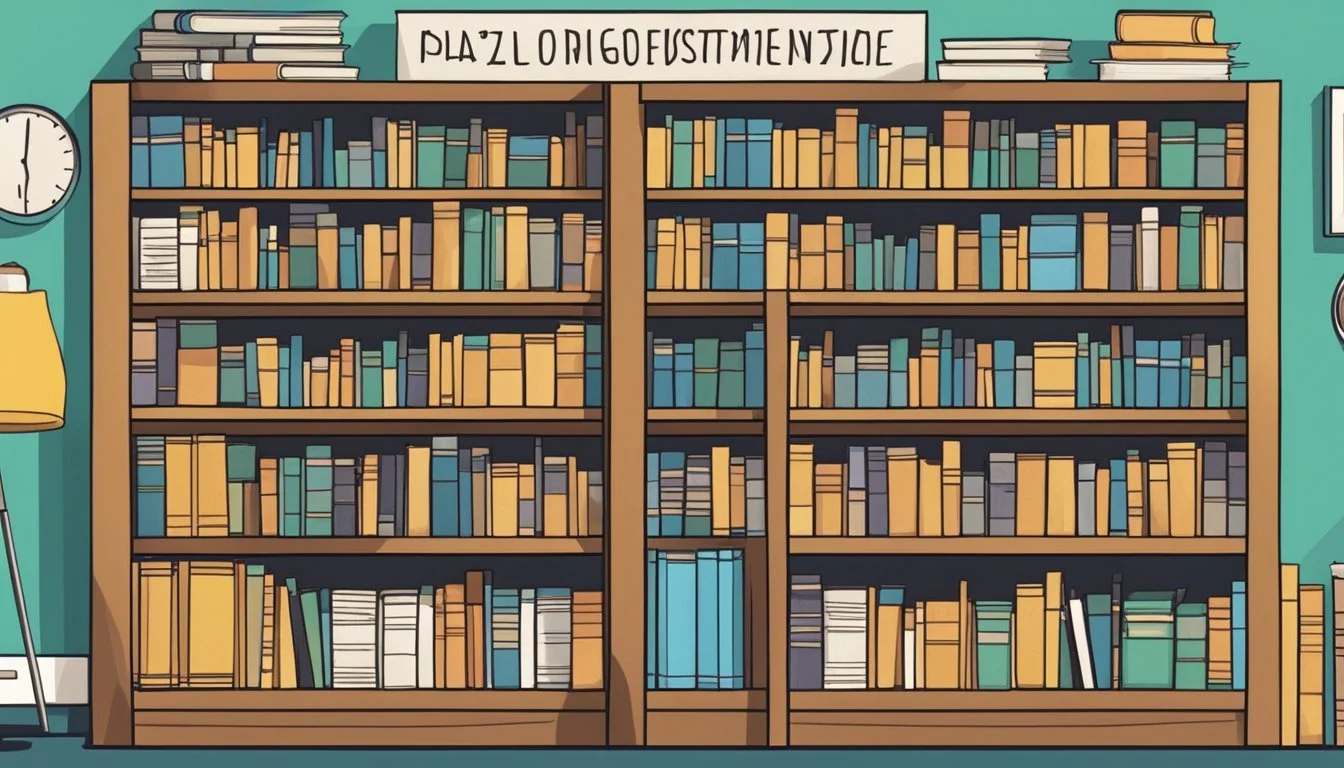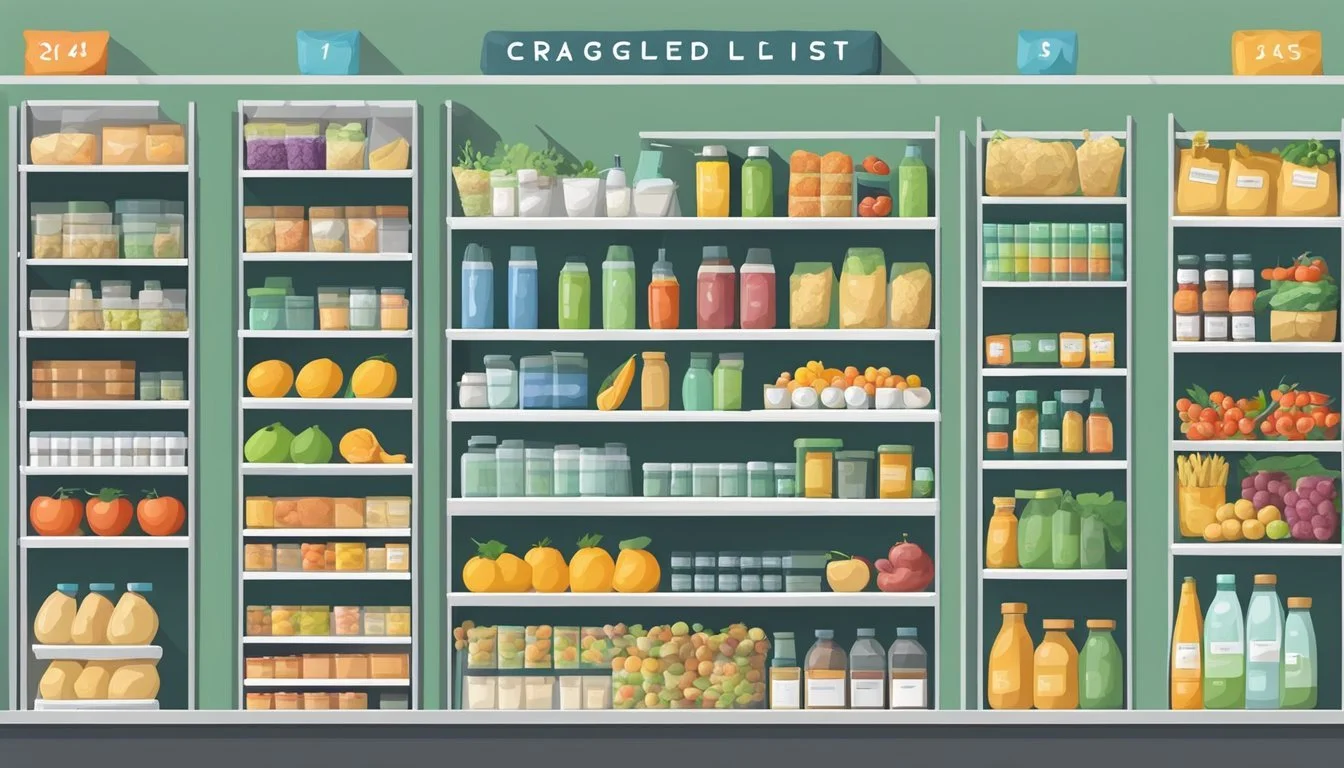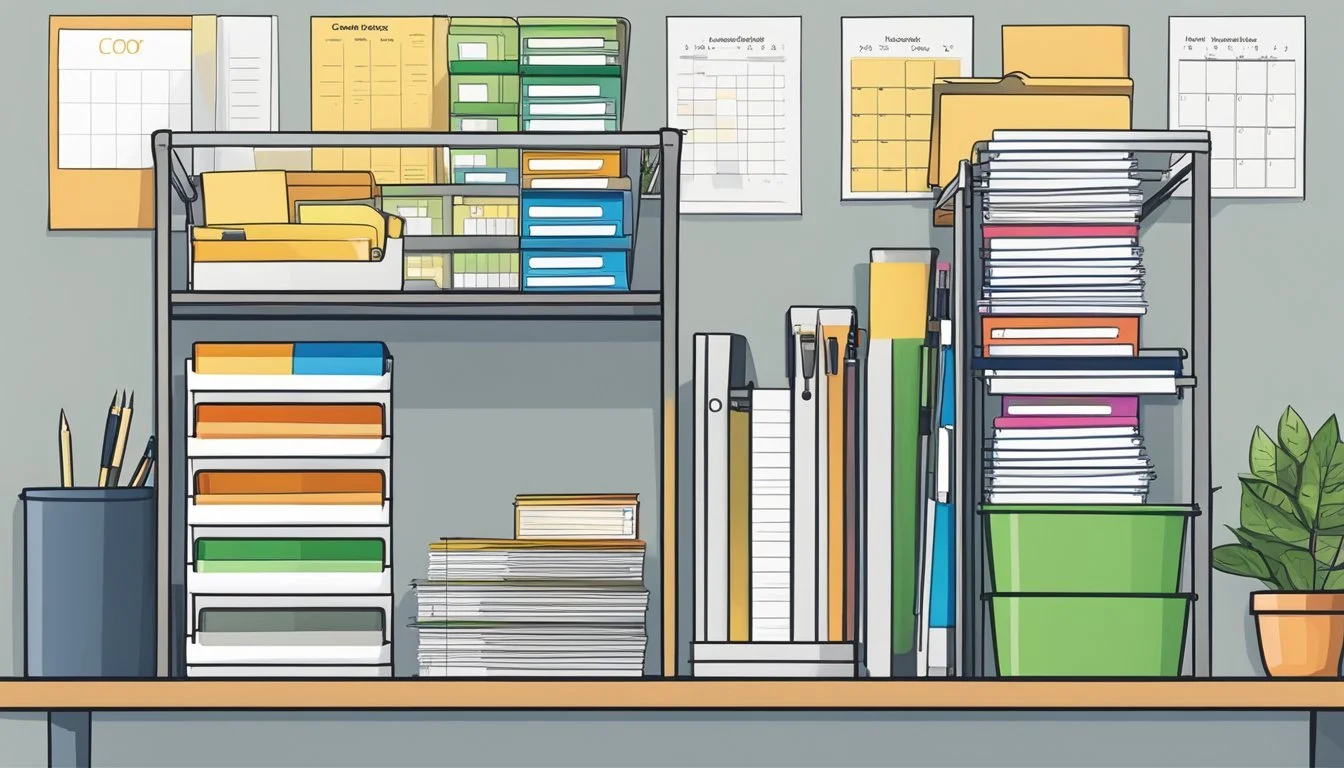12 Signs You're a Highly Systematic Organizer: An Expert's Guide
Being a highly systematic organizer means having the ability to create order and efficiency in both personal and professional environments. This skill set is invaluable for boosting productivity, reducing stress, and ensuring that tasks are completed accurately and timely.
What are the signs that indicate someone is a highly systematic organizer? Understanding these characteristics can help individuals recognize their own strengths and areas for improvement, fostering a more organized and effective approach to managing their daily lives.
1) Color-Coded Filing Systems
A highly systematic organizer often employs color-coded filing systems to maintain order. These systems involve assigning specific colors to different categories, making it easy to locate documents quickly. For instance, financial documents might be organized in green folders, indicating bills, bank statements, and loan agreements.
Consistency is crucial. Using the same color scheme across all filing systems ensures that everyone in the household or office understands the organization method. This reduces the frustration of hunting for important papers.
Such a system is not only practical but also visually appealing. A well-organized, color-coded filing system can enhance the overall efficiency of managing documents and records. For instance, see how green hanging file folders can streamline bills and banking tasks.
Different colors for different document types can save time and make filing less tedious. The method is simple: gather your supplies and assign colors to categories as demonstrated by the FamilyRoots Organizer. Each color represents a specific type of document, ensuring easy retrieval when needed.
By adopting such a system, highly systematic organizers bring orderliness into both personal and professional environments. This approach prevents chaos and allows for a smoother workflow, illustrating one of the many ways they excel in organization.
2) Document Management Software
A highly systematic organizer frequently utilizes document management software to keep digital files orderly. These tools aid in maintaining structured, easily accessible digital records, reducing physical clutter.
Software such as Adobe Document Cloud features mobile apps, allowing users to manage files on the go. It supports viewing, signing documents, and taking photos of forms for digital completion.
For those requiring workflow automation, DocuWare excels. This platform integrates well with other systems, enhancing document handling efficiency.
Platforms like OnlyOffice are appreciated for collaboration capabilities. It supports version control, making it easy to track changes and communicate within the document.
Selecting the right document management software can significantly enhance organizational effectiveness. Key features to look for include ease of use, integration capabilities, and robust security measures. Proper utilization of these tools is a hallmark of someone who excels at systematic organization.
3) Label Maker Usage
A highly systematic organizer knows the value of a good label maker. Label makers help identify and categorize items quickly and accurately. Using them can transform chaotic spaces into orderly ones.
He or she often uses label makers to mark storage bins, files, and pantry items. This ensures everything has a designated place. It also makes finding items easier and faster.
There are various types of label makers available. For instance, some professionals prefer handheld Bluetooth models for flexibility, as seen in Real Simple’s recommendations.
Others might choose desktop options for heavier tasks. The best choices often depend on the specific needs of the user. Professional organizers, as highlighted in Lasting Order’s guide, emphasize the importance of selecting the right model for the job.
Label tape quality is another consideration. Different tapes offer varying levels of durability. Most systematic organizers opt for tapes that are water-resistant and fade-proof to ensure long-lasting labels.
In summary, mastering the use of label makers signifies a keen attention to detail and a commitment to maintaining order.
4) Weekly Planning Rituals
A systematic organizer thrives on structure and routine. One clear sign of such a person is their commitment to weekly planning rituals.
Every week, they set aside dedicated time to review their schedule, assess priorities, and outline tasks. This ritual helps them approach each day with clarity and focus.
By using tools like planners, they efficiently break down goals into manageable tasks. Options like the Moleskine Weekly Planner or a tear-off planning pad can be especially helpful.
They also take time to reflect on past weeks. Evaluating what worked and what didn’t allows them to make necessary adjustments. This ongoing process fine-tunes their system for greater efficiency.
Committing to this ritual is crucial. It’s not just about creating a plan; it's about sticking to it and making it a habitual part of their weekly routine. A sense of accomplishment often follows, reinforcing the habit further.
Notably, maintaining these planning rituals can be seen as a form of self-care. Despite the initial perception that such structure could feel restrictive, many find it liberates more time for other activities, including relaxation. This balance underscores the importance of careful planning in a systematic organizer's life.
5) Digital Task Lists
Digital task lists are a cornerstone for anyone looking to stay organized. They provide a flexible and convenient way to manage tasks across multiple devices.
For those who are often on the go, apps like Todoist offer synchronization across platforms, ensuring you can access your to-do list anywhere.
Applications such as TickTick help in breaking down larger tasks into smaller, manageable subtasks. By doing this, it promotes a structured approach to tackling projects.
Some apps, for example, Fantastical 2, merge calendar functionality with task management, allowing seamless integration of events and reminders.
Digital task lists also support various features like drag-and-drop organization, priority settings, and due date reminders. These features enhance efficiency by ensuring tasks are organized according to importance and deadlines.
Choosing the right task management app is integral to optimizing productivity. Finding an app that aligns with individual needs and preferences can help maintain order in both personal and professional commitments.
6) Categorized Shelves
A hallmark of a highly systematic organizer is the use of categorized shelves. This approach helps maintain order and efficiency in various spaces, including homes and offices.
Organized individuals often group similar items together. For instance, in a home library, books might be sorted by genre, author, or even color.
In the kitchen, categorized shelves can make finding utensils or ingredients faster and simpler. Plates, bowls, and drinkware often have designated spots for easy access. They might even incorporate decor to make the space aesthetically pleasing.
Workspaces benefit significantly from categorized shelving. Office supplies, files, and tools each have their own section, reducing the time spent searching for what’s needed and increasing productivity. This method not only looks orderly but also promotes a clutter-free environment.
Overall, the key to categorized shelves lies in the consistent placement and labeling of items. This helps maintain a neat appearance and ensures that items are returned to their proper places. The result is a well-organized, efficient space.
7) Routine Decluttering
A key sign of a highly systematic organizer is the practice of routine decluttering. They set specific times to clear out unnecessary items, ensuring that clutter doesn't build up over time. Regular decluttering sessions keep spaces neat and functional.
They often start with low-hanging fruit, such as items that haven't been used in the past year. This makes the process manageable and reduces the feeling of overwhelm. It's a practical way to keep areas under control.
Setting deadlines can be another effective strategy. Deadlines provide a sense of urgency and help maintain focus on the task at hand. Once a deadline is set, they stick to it, which helps ensure the decluttering project doesn't drag on indefinitely.
Utilizing methods like the 12-12-12 method can also simplify the process. This involves choosing 12 items to throw away, 12 to donate, and 12 to keep. It’s an efficient way to systematically reduce clutter without feeling overwhelmed.
Timers can help maintain a steady pace during decluttering sessions. By setting a timer for 10 minutes or more, they can focus intensely for short bursts, gradually making progress. This approach prevents burn-out and maintains motivation.
Routine decluttering ensures that their spaces remain efficient and user-friendly. It’s a habit that supports their overall organizational system, allowing them to maintain a clutter-free environment year-round.
8) Alphabetized Book Collections
Alphabetizing books is a hallmark of a systematic organizer. This method involves arranging books in order based on authors' last names or book titles.
This approach provides a straightforward way to locate a specific book quickly. If someone remembers the author's name, finding the book becomes a simple matter.
The practice can extend to multiple categories. For instance, some prefer alphabetizing by authors' last names, while others might choose to order by book titles.
When collections are extensive, subdividing genres before alphabetizing can make navigation even easier. Grouping fiction and non-fiction, then arranging each group alphabetically, provides a refined level of organization.
Alphabetizing also lends a clean, structured look to bookshelves. This method aligns with a minimalist aesthetic, minimizing clutter and disorder.
For those who enjoy aesthetic organization, combining alphabetization with visual elements, like book height or color, can create an orderly yet visually appealing display.
This precise organizational style exemplifies a highly systematic approach, enhancing both the function and form of book collections. More details on this can be found here.
9) Streamlined Wardrobes
A hallmark of a highly systematic organizer is the ability to maintain a well-streamlined wardrobe. This goes beyond just decluttering; it involves categorizing and arranging clothing in a way that maximizes space and efficiency.
One essential technique is utilizing multi-level hangers, especially beneficial for small wardrobes. These hangers allow for more items to be hung in the same vertical space. Additionally, incorporating hooks on the inside of doors can provide storage for accessories like belts, hats, or bags.
Another beneficial practice is dividing the wardrobe into specific zones. Each zone can be dedicated to a particular type of clothing, such as formal wear, casual outfits, and seasonal items. This division makes it easier to locate specific pieces quickly.
Using the higher shelves for less frequently needed items is another effective strategy. Seasonal clothing or special-occasion wear can be stored on upper shelves, keeping everyday items accessible.
Rotating clothes with the change of seasons can also keep the wardrobe efficient and up-to-date. This practice ensures that only relevant clothing is readily available, while off-season attire is stored away.
Lastly, different hanging spaces for long and short items can significantly reduce wasted space. Combining this with clear labeling on storage boxes or baskets can further enhance organization. For more tips on maximizing efficiency, you can explore detailed ideas on this wardrobe layout guide.
10) Dedicated Workspace Zones
Creating dedicated zones within a workspace can significantly boost productivity. By dividing the office into distinct areas for specific activities, tasks become more manageable and focus improves.
For example, a reading area can be set up with a comfortable chair and small table in a quiet corner. This creates a calm space for focused reading or reviewing documents.
Similarly, having a dedicated workspace for computer tasks ensures that all necessary tools are within arm's reach. A central table for meetings or collaborative work can foster effective teamwork and reduce distractions.
Additionally, organizing a separate zone for storage keeps the main workspace clutter-free. This could include shelves or cabinets for storing documents, supplies, and other essentials.
By implementing these zones, a highly systematic organizer can maintain a structured and efficient work environment. This approach aligns well with the idea of maximizing productivity through organizing.
Lastly, these zones should be flexible to accommodate changes in work routines or tasks. Adjustable zones ensure the workspace remains functional and effective as needs evolve.
11) Systematic Grocery Lists
Highly systematic organizers approach grocery shopping with methodical precision. They categorize items to mirror the layout of their preferred store, starting from produce and moving through sections like dairy, bakery, and meats.
This organized approach can save time and reduce stress. It ensures that all items are efficiently located, eliminating the need for backtracking through different aisles.
Some prefer to utilize a master grocery list template, which they update regularly. This template includes all essential categories and frequently purchased items, making it easy to check off what’s needed for the week.
For even more structure, they might include sections for weekly meals at the top of the list. This allows them to match ingredients to planned meals, avoiding unnecessary purchases and food waste.
Incorporating specialty item sections helps in remembering less frequently needed ingredients for particular recipes. This ensures no detail is overlooked, making their grocery shopping experience both thorough and efficient.
Printable grocery lists are another tool used. These can be simple templates that are filled in each week or pre-itemized lists, ensuring nothing is forgotten. Some might even opt for digital tools or apps to manage their lists on the go.
By adopting these strategies, systematic organizers transform a potentially chaotic task into a smooth, efficient process. Their meticulous methods ensure they stay on track and purchase only what’s necessary.
12) Organized Finances
Keeping finances in order is a hallmark of a highly systematic organizer. They typically maintain detailed budgets, track expenses, and regularly review their financial goals. This attention to detail helps them avoid unnecessary spending and ensures they are always aware of their financial standing.
They often use tools such as expense tracking apps or spreadsheets. These tools help them categorize transactions, set alerts for due dates, and monitor savings progress. Their financial planning extends to setting short-term and long-term goals, enabling them to make informed financial decisions.
Emergency funds are another critical aspect. They ensure they have a safety net for unexpected expenses, which provides them with financial stability and peace of mind.
They are also mindful of their investments. Regularly reviewing investment performance and adjusting their strategy as needed is a common practice. This proactive approach maximizes their financial growth potential.
Together, these habits create a solid financial foundation, enabling them to manage their money efficiently and effectively. For more traits of highly organized individuals, readers can look into habits such as those described by Brain Manager and Develop Good Habits.
Benefits of Being a Systematic Organizer
Systematic organizers enjoy the advantages of increased productivity and reduced stress through meticulous planning and execution of tasks.
Increased Productivity
A systematic organizer excels at managing time and resources. Prioritizing tasks helps them focus on what's truly important, which minimizes wasted effort.
Creating and maintaining detailed to-do lists ensures that nothing is overlooked. It also allows for clear tracking of progress and deadlines. This method leads to completing tasks efficiently and effectively.
Using tools such as calendars, planners, and organizational apps helps to streamline activities. These tools can assist with setting and adhering to goals, making the overall workflow smoother.
By having a structured approach, they can easily identify and eliminate any distractions that could hinder productivity. This attention to detail makes it possible to achieve more in less time.
Reduced Stress
One of the significant benefits of being systematic is the ability to reduce stress through effective planning. Knowing what needs to be done and when provides a sense of control over daily responsibilities.
Preparing for different scenarios and having backup plans can alleviate anxiety related to unforeseen events. This preemptive planning ensures that unexpected challenges are handled smoothly.
A tidy and organized environment contributes to a clear and focused mind. Clutter can often lead to feelings of overwhelm; staying organized helps to maintain calm.
By streamlining tasks and routines, systematic organizers can enjoy a more balanced lifestyle, with ample time for relaxation and personal pursuits, which ultimately contributes to their overall well-being.
Common Traits of Systematic Organizers
Systematic organizers share distinctive habits that contribute to their efficiency and effectiveness. These traits include an unwavering attention to detail and a firm adherence to consistency and routine.
Attention to Detail
Systematic organizers focus meticulously on every small element of a task. They ensure nothing falls through the cracks. A project or task is not deemed complete until every aspect has been scrutinized.
This precision helps in reducing errors. For example, when preparing reports, they review the data multiple times to catch any inconsistencies. This habit is particularly beneficial in fields requiring accuracy, such as finance or engineering.
Moreover, organized individuals often create detailed to-do lists. These lists include all tasks, even minor ones, ensuring nothing is overlooked.
Consistency and Routine
Consistency is a hallmark of systematic organizers. They create and maintain routines that streamline daily activities. This might include sticking to a set morning routine or using specific tools to manage their tasks.
Consistency helps in building reliable habits, making it easier to tackle both personal and professional responsibilities. For instance, systematic organizers might reserve specific times of the day for checking emails, which prevents distractions during more focused work periods.
Routine is also visible in their approach to problem-solving. They use established methods and checklists to address issues, leading to predictable and efficient outcomes.
Understanding these traits can help anyone looking to become more organized or improve their productivity.








